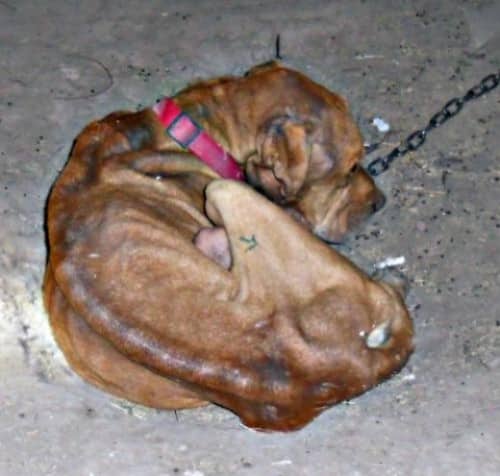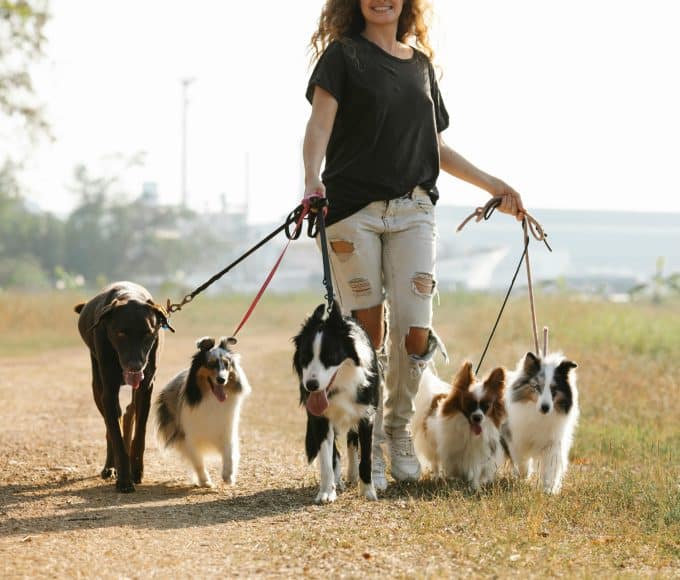Authorities and humane organizations rely on reports from concerned parties to uncover, rectify, and prosecute people involved in animal cruelty in the form of abuse or neglect. It’s important to come to an educated decision to file a report with police or a local humane organization.
What may look like neglect can be a misunderstanding. For example, a dog that seems stuck outside may have access to a doggie door you can’t see. An animal’s low body weight may be caused by a medical condition the owners are doing everything in their power to manage. In addition, many cases of neglect stem from ignorance rather than malicious intent. Sometimes, if there are alternative explanations to abuse and if you feel secure doing so, having a polite conversation can correct an unfortunate situation.
Usually, however, it’s best to let authorities handle possible animal cruelty. Experts can make determinations and gather evidence. Children abusing animals may be mimicking abuse inflected on them. There are numerous reasons to limit your involvement to making an anonymous report.
Below are some telling signs of animal cruelty, abuse, and neglect. If you observe any of the following, please file a report with police or a local humane organization.
When and What to Report: 15 Warning Signs of Animal Cruelty
1. You witness physical abuse, such as hitting, clubbing, kicking, strangulation, lighting an animal on fire, or holding an animal’s head under water.
2. An animal with untreated wounds, injuries that do not heal, recurring injuries, or scarring or other indications of repeated wounds is most likely being abused.
3. An animal wears a collar that is too tight or embedded in their flesh. This often results from failure to adjust the collar as an animal grows and can cause pain, strangulation, and death.
4. An animal is emaciated, possibly to the point of seeing bones. This is a likely indication an animal is not being fed.
5. An animal is kept outside for extended periods without access to fresh food and water or shelter. This holds especially true during particularly cold, hot, or otherwise inclement weather. Animals also need shade in hot weather.
6. An animal is kept in an unhygienic or potentially dangerous environment. This may mean a house or yard full of trash, broken glass, chemicals, feces, or other hazardous materials.
8. You notice an animal with sores or considerable hair loss, as if from mange. Other untreated skin conditions, including rashes, excessive itchiness, or scaling may indicate neglect, too.
9. An animal has untreated parasites. Fleas, ticks, and lice are relatively easy to control. Of course, sometimes re-infestations occur, so use your best judgment as to whether an animal’s condition is becoming worse or is being ignored.
10. An animal is inadequately groomed. Overgrown hair causing extreme matting or even sores, long and dirty nails, a perpetually unclean coat, and other signs a pet isn’t being properly groomed indicate neglect.
11. An animal limps, has difficulty standing or walking normally, or appears weak. Such problems can be the result of injuries, malnutrition, or other forms of abuse. An animal may also appear confused, dizzy, or disoriented.
12. An animal is kept in too small or cluttered a cage. Often, multiple animals are cramped in together. Other times, an animal is kept in an enclosure that doesn’t provide room for moving around or that is piled up with other items.
13. An animal has a heavy discharge from the eyes or nose.
14. An animal has an obvious medical condition or other health concern that is going untreated.
15. What about an animal that acts vicious, fearful, or otherwise maladjusted? While these can certainly be concerning, emotional signs of animal cruelty, abuse, or neglect are the most difficult to read. Animals may display such behaviors for a variety of reasons. If you observe what appears to be an emotional disturbance, look for other signs of animal cruelty listed above. If you notice any, if the behavior continues long-term, or if an animal seems to be a genuine threat to the safety of other people or animals, file a report.
Citations:
Article provided by discount pet medications and supplies retailer VetDepot.com.

















Leave a comment